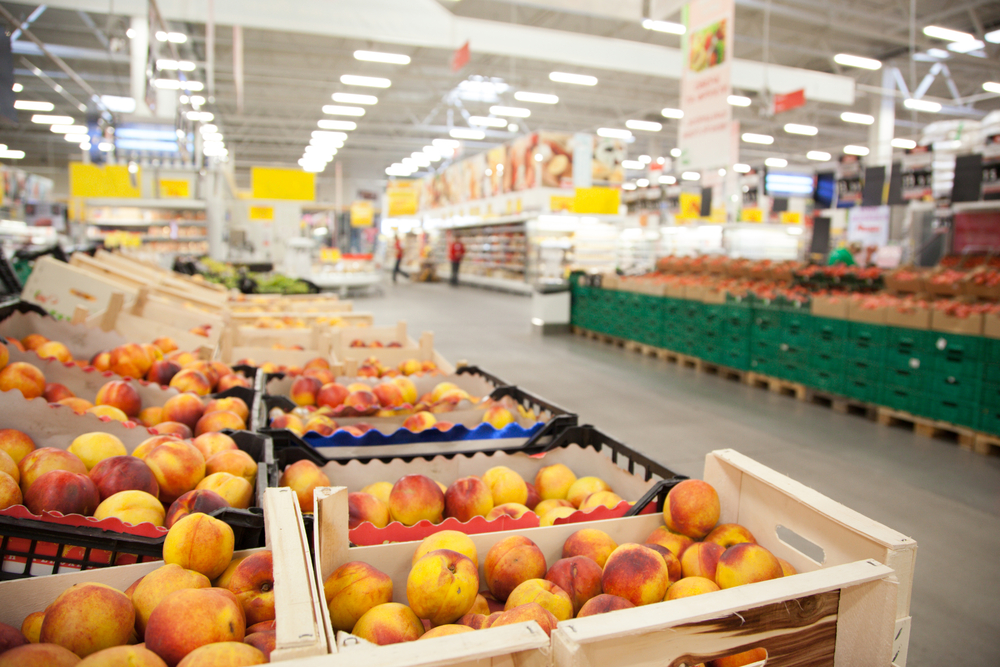Grocery Stores Are Stocking Up On Efficiency
Let's Save Energy
Alliance to Save Energy's Blog

Massive office buildings and elaborately lit structures are generally the first buildings that come to mind when considering the biggest energy users. However, the grocery store is a frequented spot often overlooked in terms of its energy usage. Illuminating shopping aisles, keeping food properly refrigerated and operating cash registers requires a large amount of energy. Let’s take a look at how grocery stores are working to improve energy management and lower the energy consumption of your dinner supply destination.
Energy Saving Opportunities
Every year, an average-sized grocery store spends more than $200,000 on energy and releases 1,900 tons of carbon emissions. Fortunately, there are energy saving opportunities from check-out lanes to freezers.
According to APS Solutions for Business, refrigeration accounts for about 50% of a grocery store’s total electricity usage. Keeping food from spoiling is a main priority, so investing in more efficient equipment is the best long-term solution. The Department of Energy recently issued new efficiency standards for commercial refrigeration equipment that are expected to decrease carbon pollution by 142 million metric tons and save businesses up to $11.7 billion over the next 30 years.
Lighting is the second largest consumer of electricity in grocery stores. LEDs are an efficient lighting option for brightening merchandise and illuminating refrigerated display cases. Instead of undergoing complete lighting retrofits, some stores choose to take advantage of natural daylight to keep their aisles lit, which keeps energy costs even lower. Others have installed occupancy sensors, which save an average of 40% on lighting that is no longer wasted on empty areas of the store.
In addition to adopting more efficient equipment and technology, simple behavioral changes can mean big energy savings. Employees can make sure that devices throughout the store, such as computers, cash registers, and deli cooking equipment, are unplugged at the end of the day and whenever they are not in use to eliminate wasted energy. Similarly, turning down the temperature on HVAC units during closed hours can avoid unnecessary waste.
Leaders in Grocery Energy Efficiency
In the past year, Walmart has made significant changes in favor of energy efficiency, such as retrofitting refrigerators and freezers and installing LED lighting in stores worldwide. President Obama even highlighted the retail chain as a model for his plans to promote energy efficiency and solar power use. Food Lion has also taken major strides in energy efficiency, having reduced carbon emissions by more than 71 million pounds through demand control and peak load reduction programs. Safeway is another grocery chain that has made significant reductions in energy usage — about 65 million kWh — through the PG&E Nonresidential Retrofit Incentives program.
Many companies are realizing that efficiency upgrades ultimately help improve their bottom line by reducing operating costs and increasing long-term profitability. With less expensive utility bills and a smaller carbon footprint, increasing energy efficiency makes sense for everyone, from the mom and pop shop to global chains.
RECENT BLOG POSTS
STAY EMPOWERED
Help the Alliance advocate for policies to use energy more efficiently – supporting job creation, reduced emissions, and lower costs. Contact your member of Congress.
Energy efficiency is smart, nonpartisan, and practical. So are we. Our strength comes from an unparalleled group of Alliance Associates working collaboratively under the Alliance umbrella to pave the way for energy efficiency gains.
The power of efficiency is in your hands. Supporting the Alliance means supporting a vision for using energy more productively to achieve economic growth, a cleaner environment, and greater energy security, affordability, and reliability.



